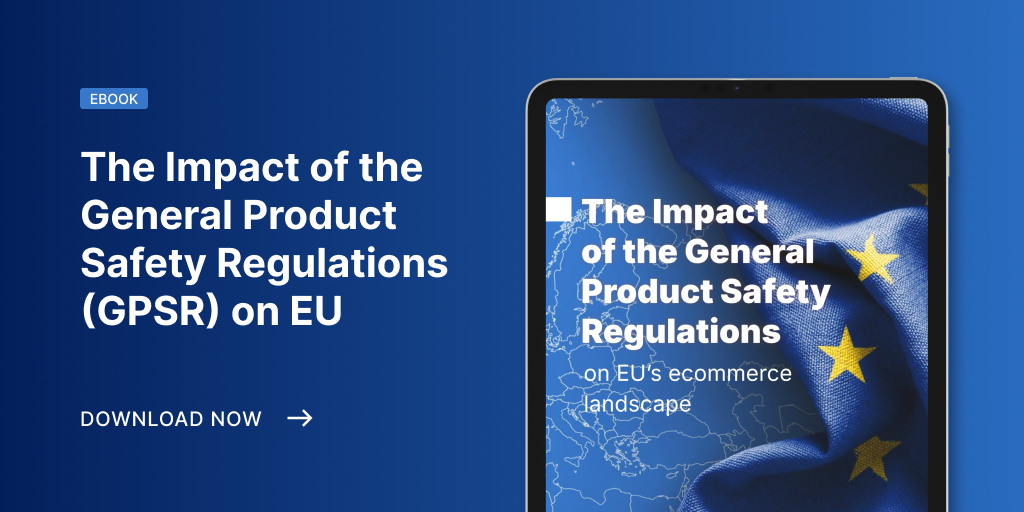The worldwide ecommerce market is projected to continue its upward trend in 2025. The market size has almost doubled since the start of the decade, and it is expected to continue growing at a steady pace until at least 2030, if not for much longer.
Early forecasts suggest that online retailers will generate $4,791 billion in revenue in 2025. Fashion, food, and electronics are some of the most popular product categories among online shoppers.
China, the US, and the UK will remain the world’s largest online markets in 2025.
Nonetheless, international sellers looking for expansion opportunities could benefit from gaining a foothold on some of the fastest-growing online markets, such as Argentina, the Philippines, or India, instead of focusing on establishing a presence on highly saturated markets.
Let’s explore more ecommerce tips that can make navigating international ecommerce waters in 2025 easier and help you reach your business goals.
Key Takeaways
- Investing in SEO and staying up to date with the latest algorithm updates will improve the visibility of your listings on online marketplaces.
- Over a third of Amazon sellers use AI to create and optimize listings.
- Argentina is the world’s fastest-growing online market, with an annual growth rate of 29.9%.
- The Augmented Reality retail market is projected to reach $61.3 billion by the end of the decade.
- More than 70% of Gen Z shoppers are willing to pay more to purchase products offered by brands that behave ethically and display a commitment to sustainability.
The overview of the international ecommerce market at the end of 2024
The shift from in-store to online shopping continues to dominate the global retail market as growing numbers of consumers gain more trust in the security and safety of the process.
2.71 billion people worldwide made online purchases in 2024, and this figure should increase to 2.77 billion by the end of 2025. These figures reveal that ecommerce is still growing in popularity nearly five years after the boom caused by the global pandemic.

During that time, mobile ecommerce was one of the key drivers of the market’s global growth as more and more consumers prefer to shop from their smartphones.
The statistics show that 44% of all online purchases in 2024 were completed from a mobile device. Furthermore, 55% of consumers in the UK prefer to do online shopping from a smartphone.
The m-commerce trend will continue to be a major factor online retailers must consider when optimizing their stores in the future.
Even if you’re running an online store on eBay or Amazon, you should still optimize your brand store and listings for mobile to maximize your sales in 2025.
The growing reliance on AI tools is another trend that has shaped the ecommerce market in 2024. International sellers on Amazon have been using these tools in the past year to perform the following tasks:
- Write product descriptions
- Research keywords and implement them into the content
- Produce promotional materials for their social media channels
- Process customer data
- Conduct product research
- Improve customer care processes
All signs indicate that AI tools will become even more refined in the next couple of years, enabling retailers to optimize all aspects of their operations. Hence, finding ways to utilize these apps to increase customer engagement and improve their online store’s performance is a priority in 2025 for online sellers.
The expansion of payment options, personalization of the shopping experience, voice search, and sustainability were also among the note-worthy ecommerce trends in 2024 that will continue to impact the market significantly in the future.
5 ecommerce tips for international sellers in 2025

The emergence of new ecommerce trends seems unlikely in 2025.
Still, sellers on the EU markets will have to adjust to the Union’s new product safety regulations in order to maintain their presence on the block’s markets.
Consequently, the costs of placing products on Europe’s markets could increase in the coming years, making it more difficult for international sellers to turn a profit.

Get our free eBook to learn more about the latest product safety regulations in the EU!
Market-specific challenges like GPSR won’t disrupt broader ecommerce trends that will carry over from 2024 into 2025. Let’s go through the tips that will help you remain competitive on international ecommerce markets in 2025.
Prioritize search engine optimization
SEO is the cornerstone of a successful ecommerce business because it ensures that potential customers can discover your products.
Large marketplaces like Amazon and eBay have their own search algorithms that recommend products to shoppers using natural language processing and various other technologies.

For instance, Amazon’s A10 algorithm considers front-end and back-end keywords, customer reviews, click-through rates, and various other factors when displaying products in the search results.
Like Google, these ecommerce platforms update their search algorithms frequently. Hence, being prepared for algorithm changes in 2025 will ensure your store’s spot at the top of search rankings and boost your sales.
Here are a few tips that can help you stay atop of search rankings in 2025:
- Keep your listing titles clear, informative, and concise
- Dedicate attention to personalization
- Create captivating promotional videos and photos
- Keep customer experience in mind when creating content for your listings
- Research keywords and update keywords in old listings
2. Implement AI into your business processes to improve customer engagement
With each new release, AI tools become more powerful as machine learning algorithms are growing more refined, presenting international sellers with a sea of possibilities.
These tools automate painstakingly long processes like listing localization, making it easier for sellers to adapt to foreign markets.

Furthermore, international sellers can benefit from AI by using it to create personalized product recommendations, manage inventory, improve customer support, predict customer churn, and ultimately improve customer satisfaction.
Currently, the majority of Amazon sellers use AI tools for content creation, inventory management, image enhancement, and SEO.
Implementing these tools into your business operations should be your priority in 2025 because you might struggle to keep up with the competitors in your niche as the number of international sellers relying on AI continues to grow.
3. Scout for expansion opportunities
Conquering a heavily saturated market like China or the US will become more challenging in 2025 because shipping costs are expected to keep increasing until the end of the year.
The rising inventory transportation costs aren’t the only factor making the expansion into the world’s largest online markets difficult.
Online sellers interested in gaining a foothold on these markets in 2025 must be prepared to face fierce competition, complex tax and compliance regulations, and countless other obstacles.

Do you need help planning for 2025? Download our 2025 ecommerce calendar to identify major sales opportunities with ease!
That’s why exploring the expansion opportunities in less saturated online markets can be a lucrative decision. Latin America, Southeast Asia, and North Africa are home to budding ecommerce markets that are growing at an astounding rate.
Hence, offering your brand’s products in countries like Vietnam, Indonesia, Brazil, or Egypt can boost your business’s sales.
Furthermore, Amazon announced an expansion to Ireland in 2025, which presents the platform’s international sellers with an excellent opportunity to gain a foothold in an exciting new market.
4. Make the shopping experience more intuitive with AR technology and 3D content

At the beginning of the decade, the inability to see a product in person was one of the main reasons why consumers preferred to shop offline.
A lot has changed since then, largely due to the continued development and accessibility of 3D content and augmented reality technology, which simplify the process of visualizing and contextualizing products while bossing customer interactions.
Consequently, you can use virtual and augmented reality to:
- Offer enhanced product exploration by allowing shoppers to view a product from all angles.
- Enable customers to try on clothes, shoes, or accessories and see how they look before purchasing them.
- Check if the piece of furniture fits in their home.
Creating AR and 3D content for an online store requires a high degree of technical skill as well as a considerable amount of time.
Nonetheless, investing in 3D, virtual reality, or AR content in 2025 can help provide your customers with a more immersive shopping experience, minimize returns, and drive product sales.
5. Foster transparency with ethical branding
Trust and loyalty have been the buzzwords of the ecommerce industry for a while. 73% of millennials are opting for sustainable brands even if their products are more expensive than the alternative options.
This statistic implies that consumers favor brands that offer responsibly sourced products.
Consequently, utilizing ethical marketing techniques that entail honesty, transparency, and consumer data protection can help sellers on large online markets improve customer retention and attract new shoppers.
Listing sustainable items in your online store, taking eco-friendly initiatives, and promoting fair labor practices can help you build a base of loyal, conscious customers who support your brand because of what it stands for.
Growing ecommerce businesses on international markets in 2025
Staying ahead of the curve and anticipating the latest trends in ecommerce is crucial for staying competitive on international online markets.
Still, simply following current trends will not always produce favorable results, which is why you must find a way to use them in a way that fits your marketing strategy and business goals.
Mobile commerce, the growing reliance on AI tools, and AR technology are among the ecommerce trends that will shape 2025, and missing out on either of these trends could potentially mean falling behind your competitors.
Do you need assistance keeping up with the latest ecommerce trends? Check out Webinterpret’s full-stack solutions for eBay and Amazon sellers.
About Webinterpret
Webinterpret supports merchants selling on eBay.
Our AI-based solutions enable more effective selling through automated listing localization, advertising, and returns and ensure all products placed on EU markets are GPSR-compliant.
By giving your international customers a full, end-to-end local shopping experience, Webinterpret improves your conversion and helps establish your business globally.






